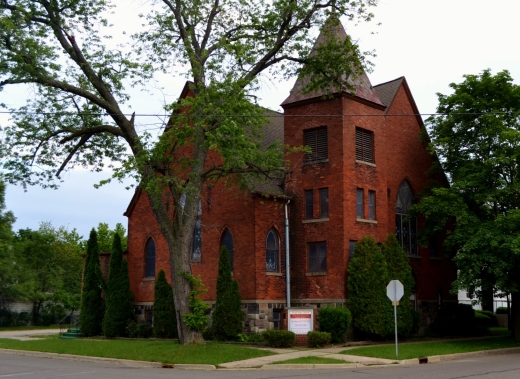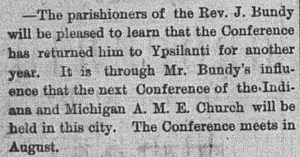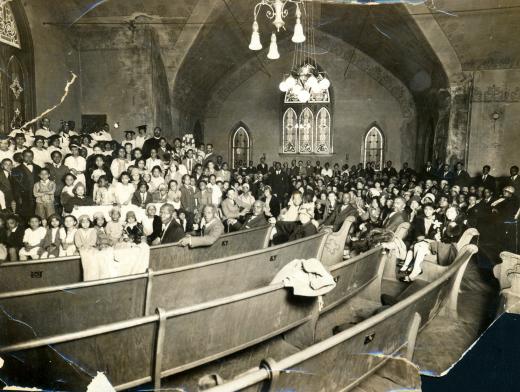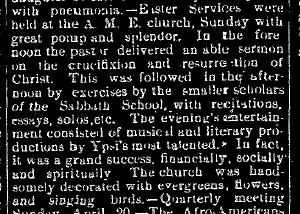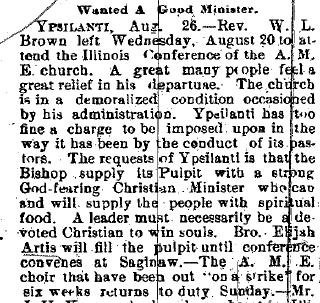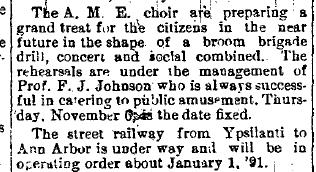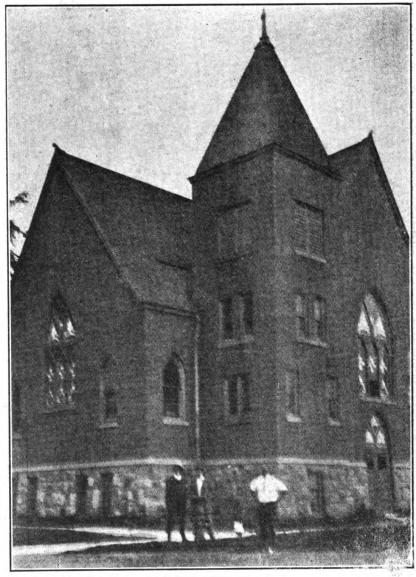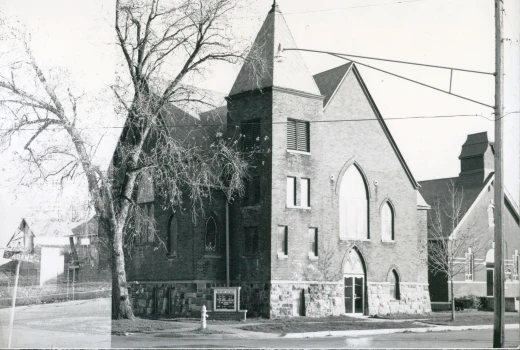Along with the nearby Second Baptist Church, Ypsilanti’s African Methodist Episcopal Church was, and remains, a center of religious life and so much more for generations Ypsilantians. These two churches were the only to serve Ypsilanti African Americans in the first seventy-five years of black history in the City.
The story of Brown Chapel African Methodist Episcopal Church goes back to the earliest days of black settlement in Ypsilanti (an archive of newspaper articles covers the years 1865-1920). Meeting first at the homes of Flora Thompson and Sylas Jones homes in 1843, the congregation was recognized in 1848, one of the earliest African American congregations in Michigan. In 1856, Jesse and Isa Stewart donated two lots on the corner of Buffalo and Adams Street to the congregation. Here several houses of worship were built, around which a community grew.
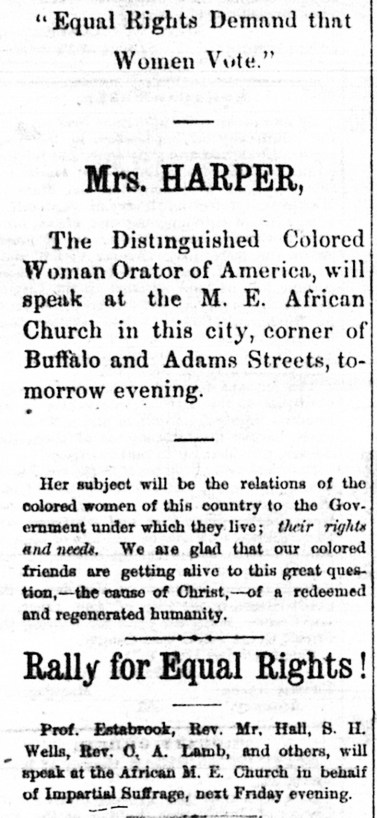
Ypsilanti Commercial. October 24, 1874. Frances Ellen Watkins Harper visits Ypsilanti and speaks at the church.
The congregation met in a converted livery stable on the corner until a larger church was built around 1870. That church faced on to Buffalo Street and incorporated into it the structure built in the 1850s. AME Pastor Lewis Pettiford began the effort to build the church that now stands on the site after his arrival to the pulpit in 1897.
In 1901 the cornerstone was laid, and in 1904 the Church was opened at a cost of around $6,000. The new, brick building would be a symbol of the community’s presence and solidity for many years. Designed by James Kersey and built by locals with construction experience, like the Bow family, it was the hands of the parishioners themselves that built Brown. The Palm Leaf Club, organized to pay the debt of the Church’s building, is active to this day.

Left to right, first row. Ruth Penn, Evelyn Upthegrove, Wavey Green, Margaret Smith, Florence Harris, Olive Green, Rev. Hurd,. Bishop Charles Spencer Smith and wife, Lorraine Green, Inez Green, Bernice Kersey, Miner Williams, Mabel Williams, Minnie Roderick, Edna Kersey.
Left to right, second row. Frank Smith, Jacob Knox, Albert Davis, Theoren Kersey, Ulysses Davis, Robert Brookes. YHS
None was more important to that effort than Wealtha Sherman. Born in the area of the Queen’s Bush settlement in Canada in 1851, Wealtha was a tireless worker for her community during all of her nine decades. She was Mother to her community and active for its relief and uplift from her arrival in Ypsilanti in the 1870s until her death in the 1940s. A photo of Wealtha in 1885 with Ypsilanti school children, both black and white, can be seen here.
The structure was finished in 1904. The church, then as now, was the central institution in the life of many black communities and one of the few places where blacks could exercise control over an institution of their own. Brown AME was no exception and remains central to the community today, 170 years after it was founded. That community is represented in the stained glass windows commemorating early parishioners, many of which were residents of South Adams Street.
For more photos of the congregation, see the photo section.
Today Brown AME meets on Michigan Avenue, about one mile from the Adams Street site. However, as of 2013, the historic building was still used as a church. Below are articles from the newspaper that give a taste of the life of the Church. Easily getting the most mention in reports from the community of the time, the newspaper section contains dozens more references to activities at Brown.
The new Church opens!
As the above makes clear, with even the choir ‘on strike’, the parishioners of Brown were organized and ready assert their interests. Evidently, for a period in the late 1880s and early 1890s, there was some conflict over the pastor sent to minister at Brown.
For a full history check your library for Brown Chapel African Methodist Episcopal Church of Ypsilanti, A Brief History.Albert P. Marshall. Ypsilanti:1979.
For more on the history of the African Methodist Episcopal Church see Howard D. Gregg, History of the African Methodist Episcopal Church: The Black Church in Action, 1980.
The congregation has a website as well.
